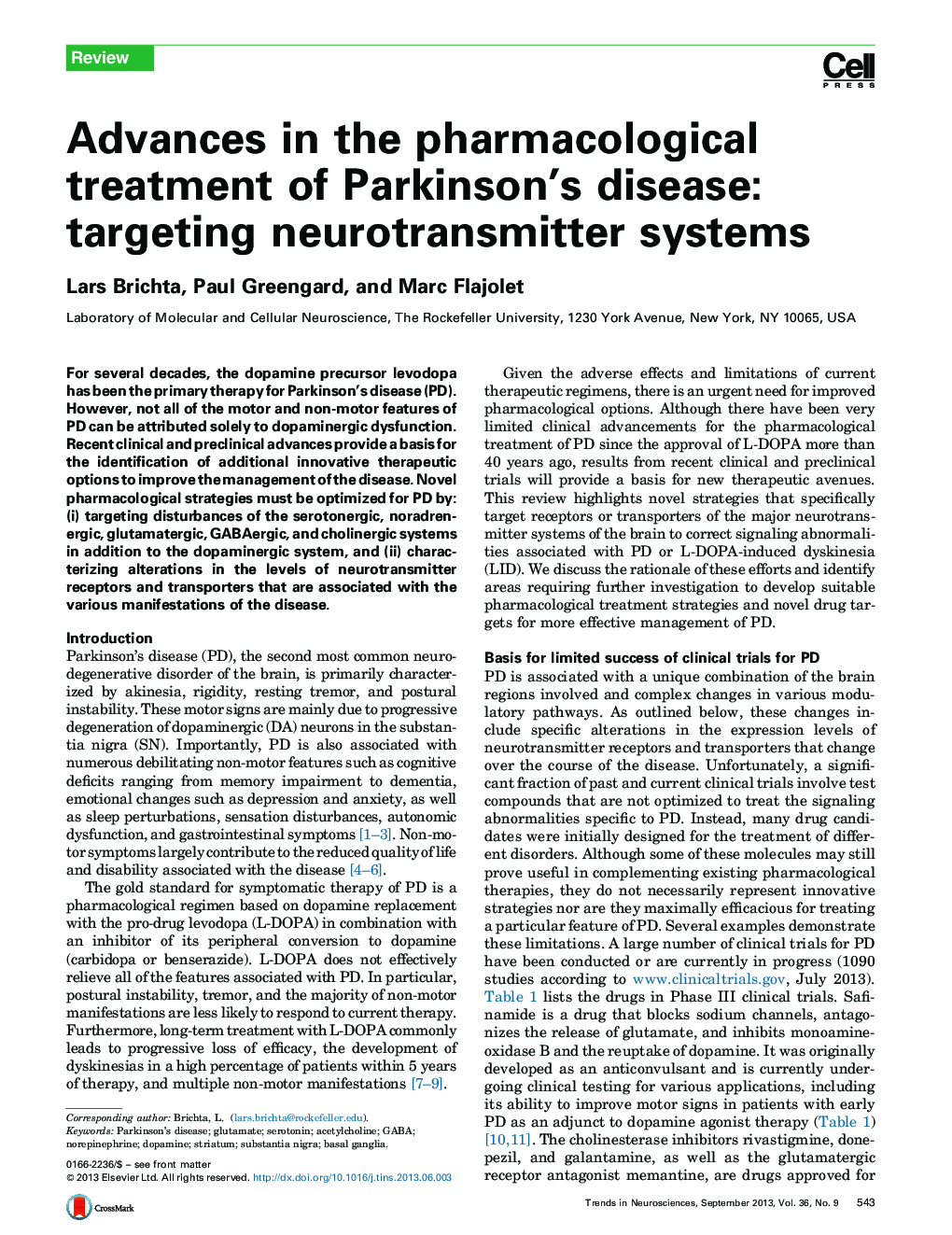| Article ID | Journal | Published Year | Pages | File Type |
|---|---|---|---|---|
| 4354393 | Trends in Neurosciences | 2013 | 12 Pages |
•Not all of the signs of PD can be attributed to dopaminergic dysfunction.•Non-dopaminergic neurotransmitters are promising targets for novel PD therapeutics.•PD is associated with unique alterations of the levels of neuronal receptors.•Refinement of expression maps for neurotransmitter receptors in the brain is desirable.
For several decades, the dopamine precursor levodopa has been the primary therapy for Parkinson's disease (PD). However, not all of the motor and non-motor features of PD can be attributed solely to dopaminergic dysfunction. Recent clinical and preclinical advances provide a basis for the identification of additional innovative therapeutic options to improve the management of the disease. Novel pharmacological strategies must be optimized for PD by: (i) targeting disturbances of the serotonergic, noradrenergic, glutamatergic, GABAergic, and cholinergic systems in addition to the dopaminergic system, and (ii) characterizing alterations in the levels of neurotransmitter receptors and transporters that are associated with the various manifestations of the disease.
